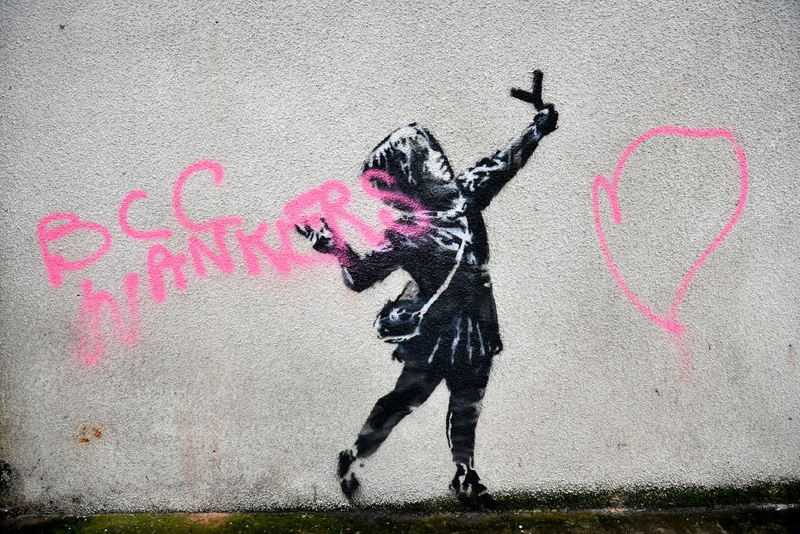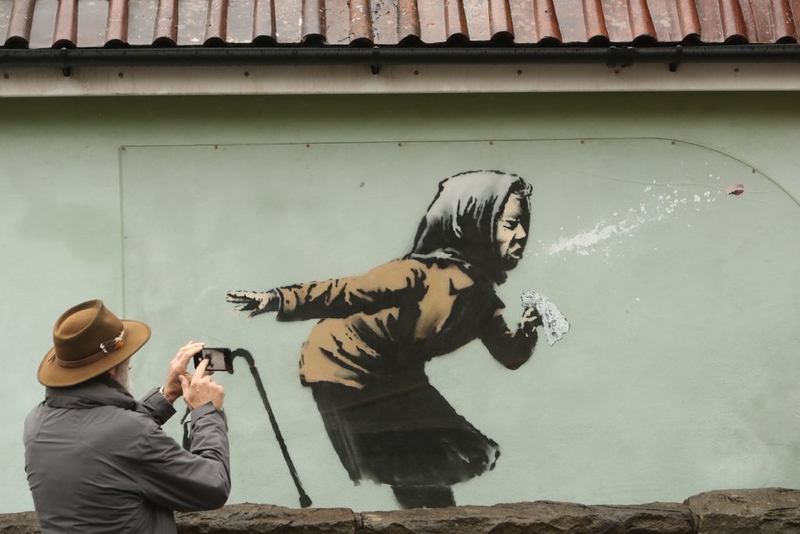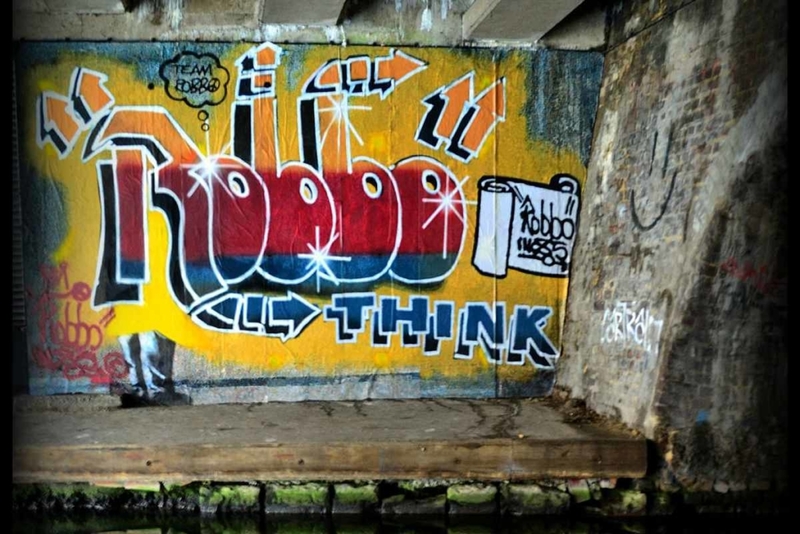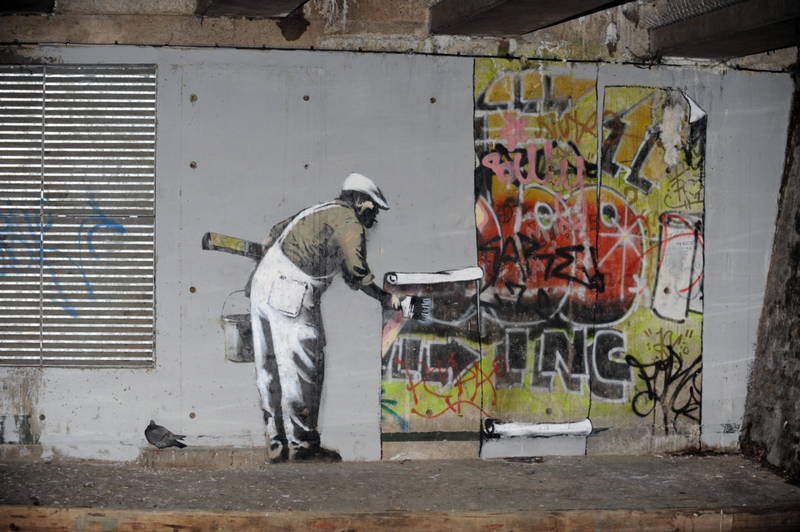Banksy, the elusive British artist who rose to prominence by vandalizing public property, made his mark with clever innovations that set him apart. His graffiti was deemed art while other similar creations are scrubbed clean. City maintenance not only allows Banksy graffiti on walls, but crews actually retouch any defacement or deterioration. Now that people will throw down millions of dollars to acquire an original Banksy, the city is keen on preserving his work. In a way, there is humor to that preservation. The subculture artist who does not make personal appearances and communicates by email or social media has said, “I love the way capitalism finds a place—even for its enemies.”
Do You Have a Problem With That?
Banksy is an exception to the supposed vandalism that is graffiti art. Rival graffiti artists are not cool with his work getting special treatment. They respond boldly with complaints visible to the world.

That’s what happened here. A rival street artist defaced Banksy’s 2020 Valentine’s Day installation. It pictures a girl launching a bouquet of red flowers with a slingshot. It was defiled within days by a tagger who scrawled “BCC Wankers,” in pink, a reference that targets Bristol’s city council. Banksy responded on Instagram and wrote, “I’m kind of glad it happened” next to a post of the original stenciled images.
Protecting Banksy
This painting was discovered in Bristol in December 2020. A clear plexiglass sheet was immediately installed over the artwork Banksy titled “Achoo!!”

Street Artist Rivalries
When Banksy grabbed a spray paint can for the very first time, he was engaging in a distinctive art form that had been around for over a decade. This was the Bristol graffiti art scene, home to a unique British subculture. Graffiti art moved from America to the UK, just like rap, and had a profound influence on the small city of Bristol. Bristol, which is about an hour and a half train ride from London, was home to a vibrant bohemian music and art scene. Styles were fed by the dynamic diversity of the multi-cultural port city, primarily by folks of Caribbean descent. Local artists developed their talent around rap and punk and other ‘80s influences.
Banksy Makes His Mark
It was out of a rivalry between graffiti artists that raised Banksy to prominence. He went after King Robbo, Bristol’s most renowned tagger. It got him noticed. Robbo was the original ruler of street art from the early ‘80s. Pictured here is one of his most respected works.

Robbo dominated the walls of the city and decorated the most trains. His style reflected more standard graffiti. In the early ‘90s, Banksy hit the scene. His trademark stencil art went after Robbo’s most revered graffiti painting.

The searing satirical message brought Robbo, who had quit street art for years, out of retirement. It was war. The walls of Bristol charted their battles. The street art rivalry would make both artists famous and the street colorful.